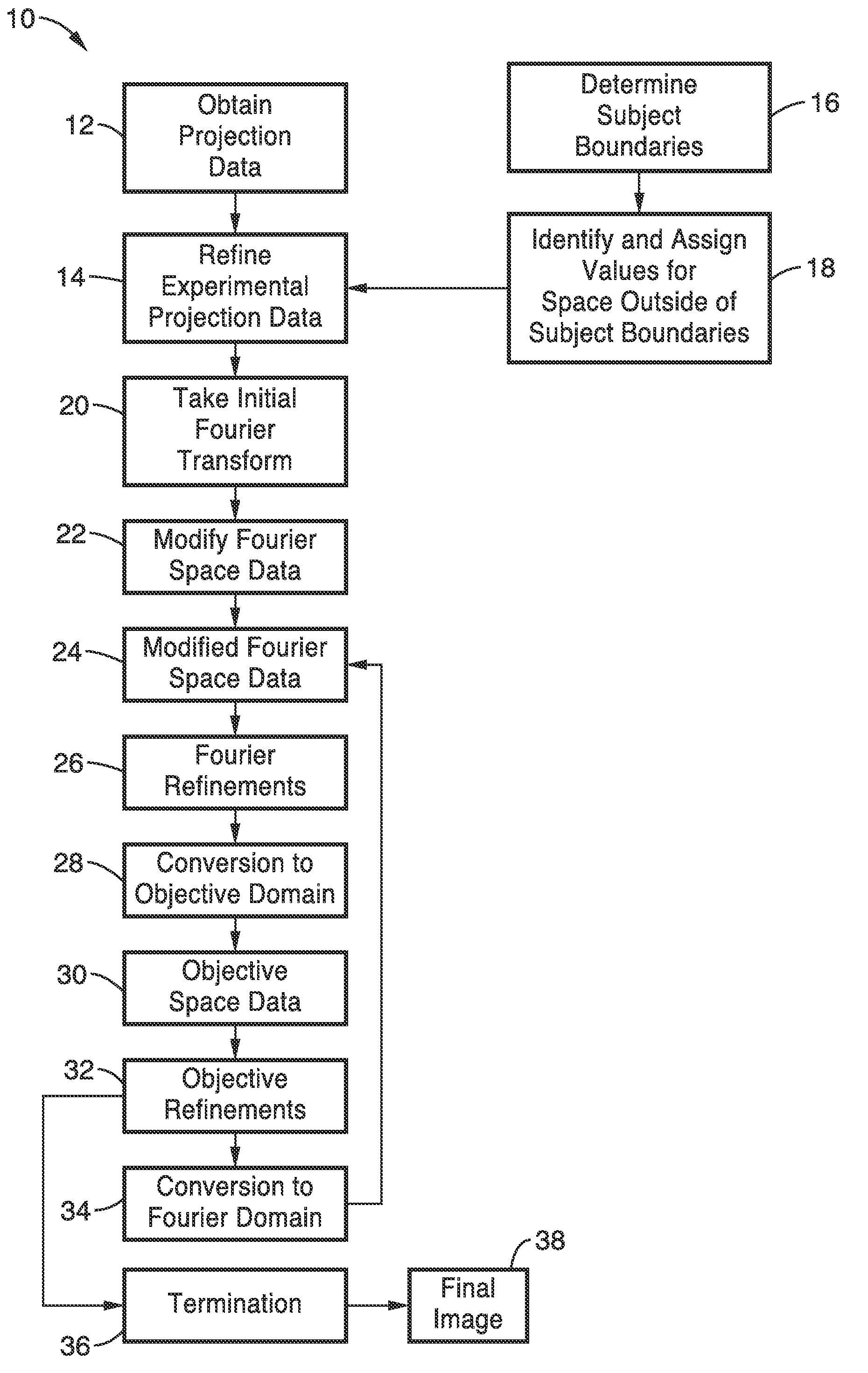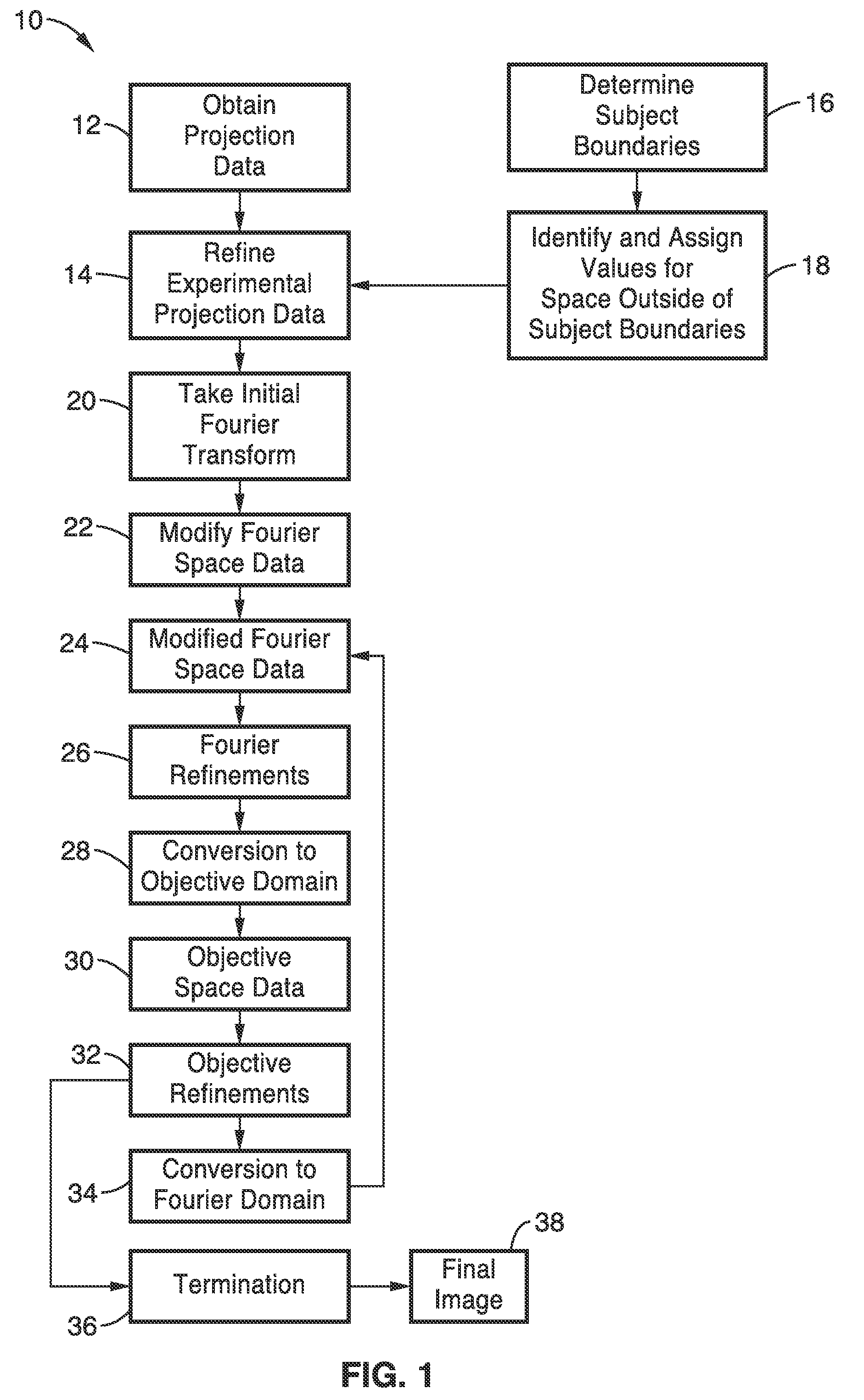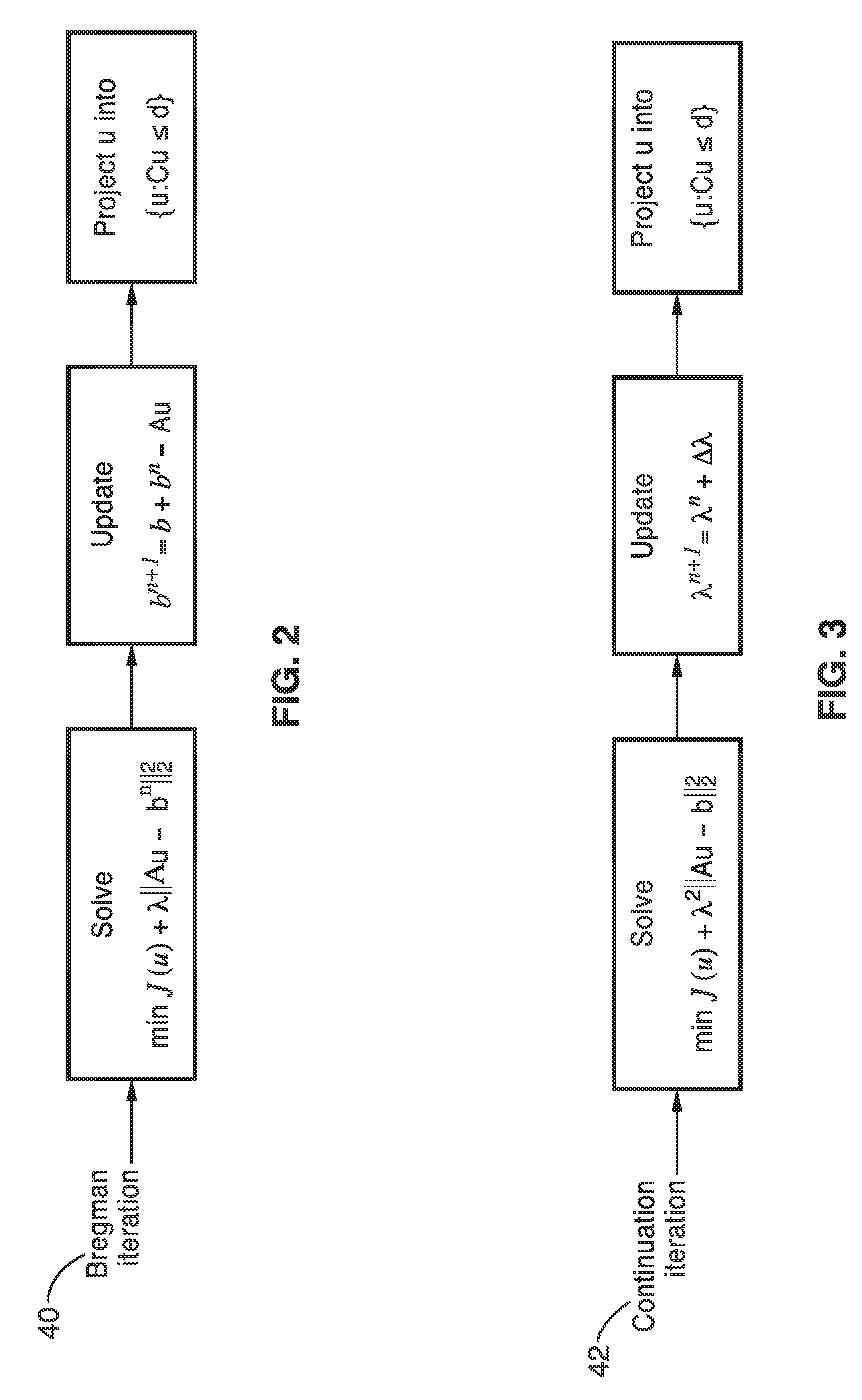System and methods for fast implementation of equally-sloped tomography
a technology of equally-sloped tomography and implementation method, which is applied in the field of diagnostic and interventional imaging systems, can solve the problems of affecting the broad application of the inverse pseudo-polar fourier transform (ppfft), the comparatively slower speed of the inability to achieve the inverse pseudo-polar fourier transform speed, so as to reduce the radiation dose and improve the image quality
- Summary
- Abstract
- Description
- Claims
- Application Information
AI Technical Summary
Benefits of technology
Problems solved by technology
Method used
Image
Examples
example 1
[0099]In order to demonstrate the functionality of the invention and the general principles behind the image refinement methods, comparative reconstructions of a phantom were conducted.
[0100]The method of one embodiment of the invention was compared with the conventional filtered back projection (FBP) approach as a function of projections and fluence. The number of projections and the fluence of the illumination particles are two factors that influence the quality of the reconstructed image and the radiation dose in tomography. The number of projections determines how many measurements, i.e. linear constraints on the image, and the fluence of the imaging system determines the magnitude of noise in the measurements. It was shown that the methods of the invention perform far better than FBP, using fewer projections and less fluence, permitting dose reduction without reducing the quality of the reconstructed images.
[0101]To quantify the quality of image reconstruction of the methods fo...
example 2
[0106]An embodiment of the method incorporating a Gradient Descent algorithm with mathematical regularization constraints, including the Non-Local Means Total Variation model was used to conduct a series of comparative experiments to quantify the image quality, and explore radiation dose reduction in a CT imager through the reduction of X-ray flux. A standard quality control phantom containing multiple contrast visibility and resolution inserts was imaged using a Siemens Somatom Sensation 64 scanner. The X-ray flux was systematically lowered from 583 mAs to 39 mAs. All scans were performed under axial mode with constant tube current. Comparison reconstructions were produced by Filtered-Back Projection (FBP) with a standard uncropped ramp filter. The resolution, signal-to-noise ratio (SNR) and contrast-to-noise ratio (CNR) were measured and compared as a function of flux.
[0107]Pursuant to the methods, the measured projections were transferred to Fourier slices by using the fractional...
PUM
 Login to View More
Login to View More Abstract
Description
Claims
Application Information
 Login to View More
Login to View More - R&D
- Intellectual Property
- Life Sciences
- Materials
- Tech Scout
- Unparalleled Data Quality
- Higher Quality Content
- 60% Fewer Hallucinations
Browse by: Latest US Patents, China's latest patents, Technical Efficacy Thesaurus, Application Domain, Technology Topic, Popular Technical Reports.
© 2025 PatSnap. All rights reserved.Legal|Privacy policy|Modern Slavery Act Transparency Statement|Sitemap|About US| Contact US: help@patsnap.com



